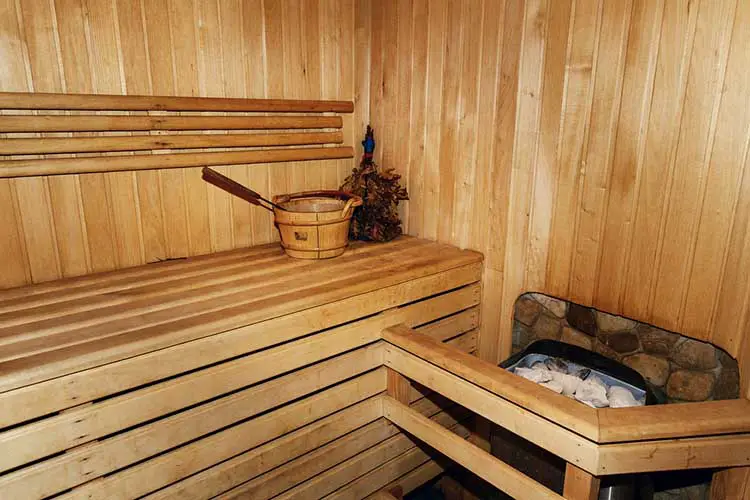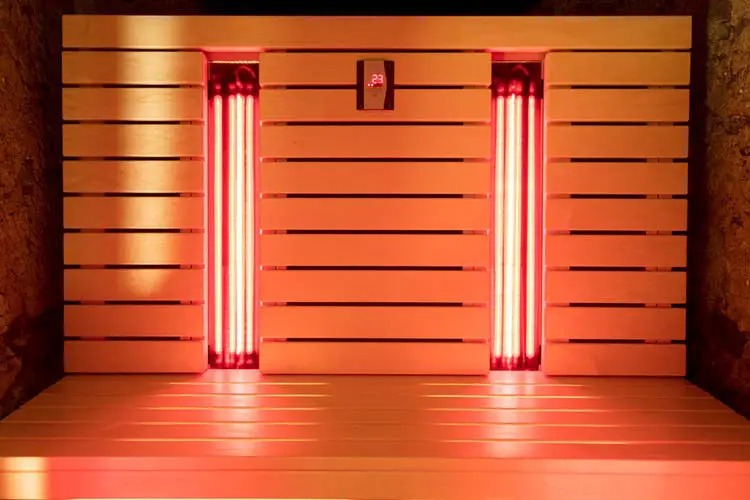About Saunas
The use of saunas dates back over 2,000 years but has undergone some modern changes within the past 100 years. The origin of saunas is often associated with Finland, which retains a strong sauna culture today. Some would also say that the Mayans’ usage of “sweat houses” nearly 3,000 years ago would constitute a primitive version of what became saunas. Japan and other cultures also have a history of sauna bathing.
We’ll look at the different types of saunas that are in use today.
Steam Bath
The steam bath or in certain circles, called a Turkish Bath, is focused on humidity above everything else. The temperatures in a steam bath can reach up to 120 degrees Fahrenheit although, with the steam and humidity, it can feel much hotter than it actually is. The room is sealed to keep in the humidity. In food terms, it’s the “steamed rice” version of saunas.
Dry Sauna
The dry sauna is named for the fact that it’s the lowest humidity of the four types of saunas. When you go to a health club or gym equipped with a steam room or sauna, the dry sauna is what you will typically find in these establishments. There are heated rocks inside the room which supply the heat needed for you to sweat it out.

Traditional Finnish Sauna
If you want to sauna like a true Finn, this is the oldest and most traditional sauna. It’s a room with heated rocks similar to the dry sauna except that the humidity of the room can be controlled by the user. You control the humidity by pouring water over the heated rocks to provide more or less steam and humidity. The extra humidity also lowers the ambient temperature of the room.

Infrared Sauna
This newest type of sauna for some sauna enthusiasts is quite different from the other three types. This type of sauna has zero humidity in the room. And unlike traditional saunas, the infrared sauna doesn’t use heated rocks to warm the room.
As the name implies, this sauna uses infrared lamps to heat the space and due to the technology, most of the heat is focused on you versus the surrounding ambiance. This provides two benefits as the room temperature is low enough that you can spend longer sessions in the room, and it’s also more energy-efficient to use in comparison to other types of saunas.
Advantages Of An Infrared Sauna
There are many benefits to using an infrared sauna as you can save money on your energy bill by using these types of saunas versus traditional ones. This energy savings comes down to the fact that you will spend shorter sessions in an infrared sauna versus a traditional one, and you will put out lower temperatures overall in comparison.
Health Benefits Of An Infrared Sauna
There are many health benefits tied with sauna use, including
- better circulation
- clearer skin
- joint pain relief
- arthritis relief
- weight loss
- sore muscle relief
- relaxation
- detoxification
- improved sleep
- lower blood pressure

Infrared Saunas – The Process
To use an infrared sauna is simple, you pre-set the temperature that you want, usually anywhere between 100 and 150 degrees Fahrenheit. It’s advisable to set it on the lower end of that range if you’re using it for the first time or if you’re a sauna novice. More advanced and familiar users can set it at a higher temperature. You can sit anywhere from 15-30 minutes to experience the most benefits from it.
The goal is to develop a good sweat while you’re in there to sweat out harmful toxins. The warm air will improve blood flow and act as an anti-inflammatory against aching joints and muscles. Pro sports athletes use saunas in this very same manner to help the body recover from grueling workouts and for long-term health benefits.
New sauna users can start with 10-15 minutes per session. As your body adapts to these sessions, you can stay in longer periods as you get acclimatized to using a sauna until you can sit in for a full 30-minute session with no discomfort.
How Do You Feel After Using An Infrared Sauna?
Users of an infrared sauna report overall well-being, relaxed muscles, and less stress. If you have a stressful day, a session in the infrared sauna can help lower your stress levels immeasurably. You can almost view an infrared sauna as a warm hug that is sorely needed after a hard day. Although this hug is much warmer and lasts a lot longer than a regular hug!
Should I buy An Infrared Sauna?
An Infrared Sauna is a great addition to your home for both its health benefits and relaxation. If you are trying to decide what kind of sauna to buy, you’ll want to weigh the pros and cons between the different types of saunas.
An infrared sauna does not require any special equipment or water lines. It also requires far less power than a traditional electric sauna. That’s largely because traditional saunas heat the air around you, while an infrared sauna warms your body directly. Very low doses of electromagnetic radiation penetrate your tissue and stimulate warmth, reaching more deeply into your muscles and the rest of your body while nevertheless operating 30 – 40˚ lower than their traditional counterparts. Plus, many models are quite portable, so you can use them wherever it’s convenient for you at the moment.
You also won’t have to worry about the house being too hot after a session as the temperatures in an infrared sauna are lower than traditional saunas. This would also cut down on using air conditioning to keep the rest of the house at a certain temperature level which also ties in with the benefit mentioned before about lower power bills than a regular sauna.
With its many health benefits an infrared sauna can be a great investment for your home.

